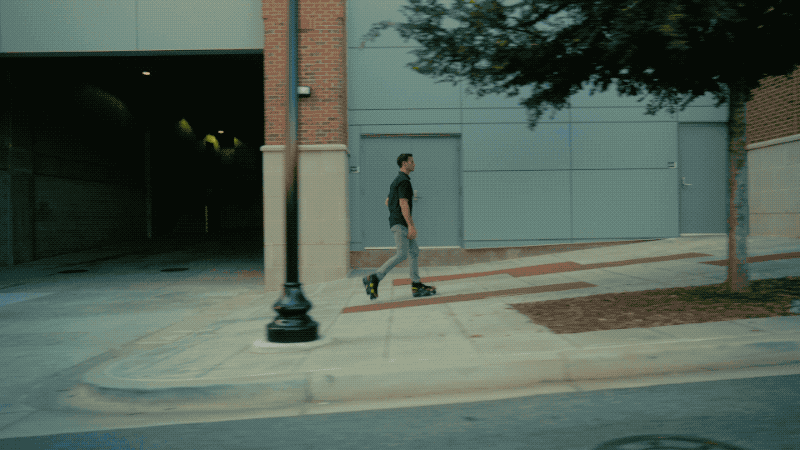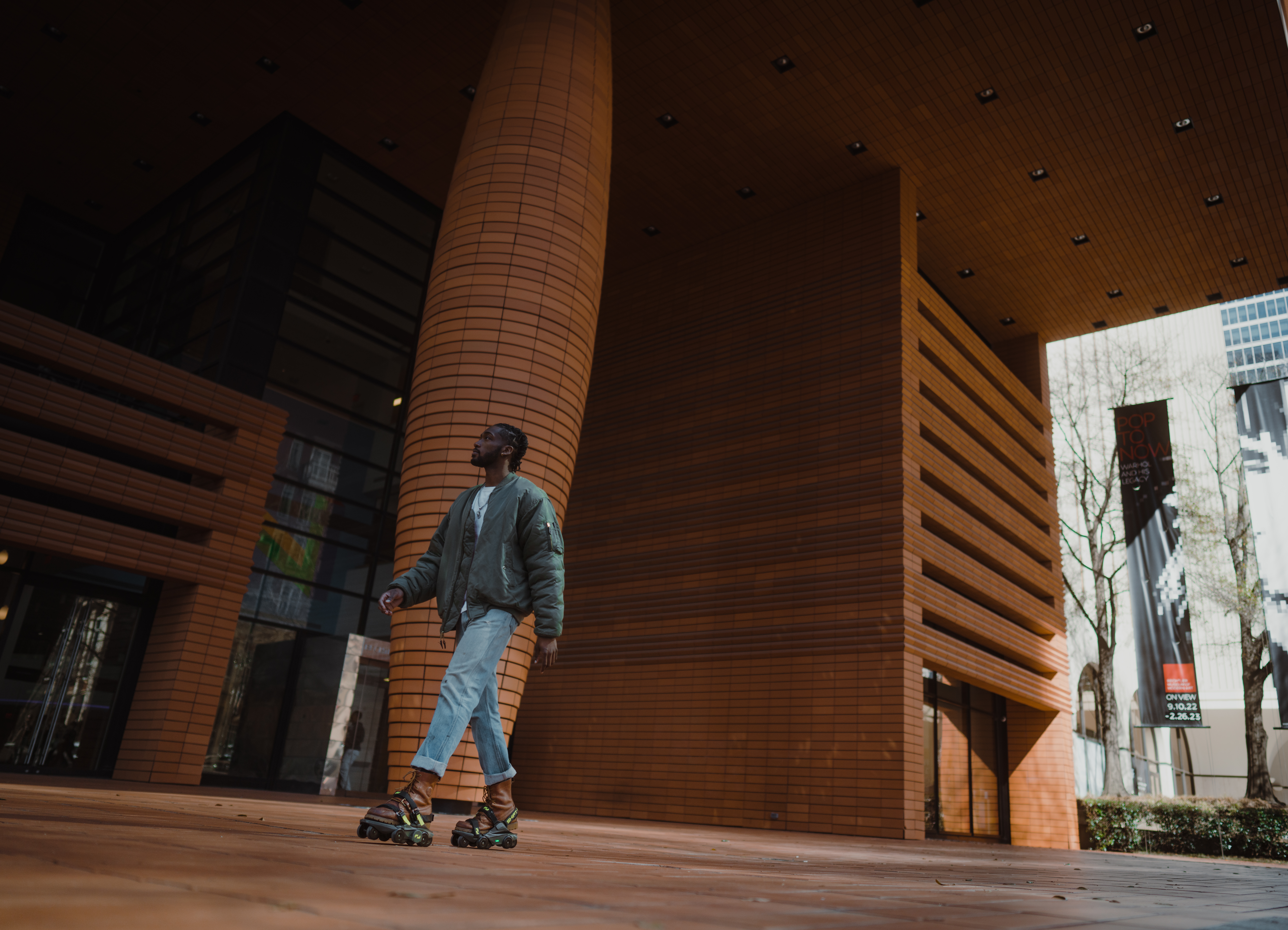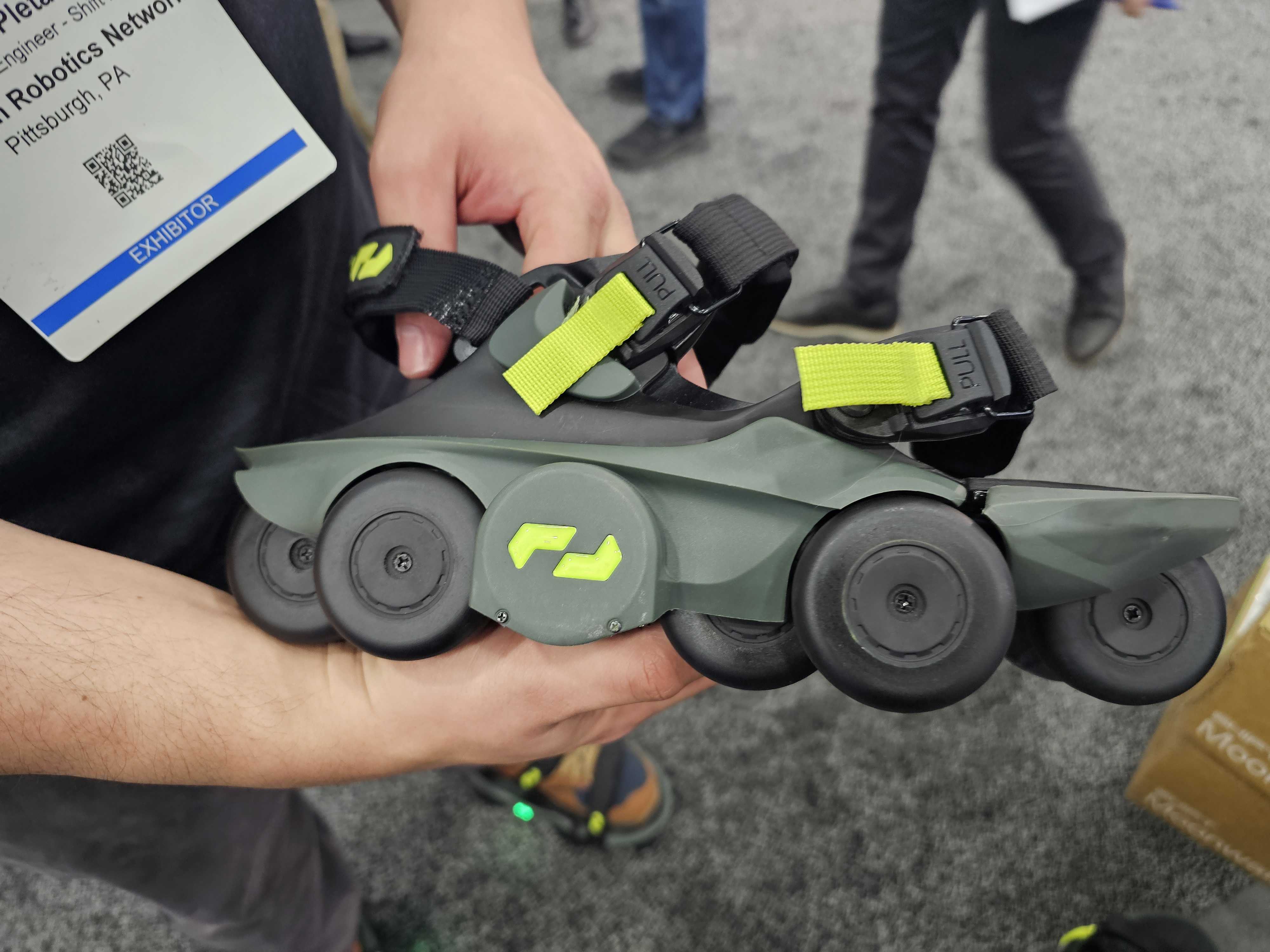Perhaps I shouldn’t have been surprised to see someone skate-walking down the halls of Detroit’s Huntington Place convention center. Don’t get me wrong, there’s plenty of interesting stuff happening at Automate today, but it simply never occurred to me that $1,400 footwear was a possibility.
For the record, that person was Abe Pleta, the lead mechanical and design integration engineer and third employee at Shift Robotics. The company’s name belies its focus — at the moment, at least (who knows where future projects might take them). The product is far removed from the hundreds of robot arms lining the show floor.
The startup was ostensibly at the event as a representative of the Pittsburgh consortium — effectively a small cluster of interesting companies based in the area that also includes drone inventory firm Gather AI. But there’s another interesting layer to its presence the event: Shift has been increasingly looking toward the enterprise market. It’s one of those unexpected potential market fits. People working in warehouses do a lot of walking. The company’s Moonwalker shoes have the potential to help people walk smarter, not harder.

Image Credits: Shift Robotics
Shift was founded in 2018 by Xunjie Zhang, who went back to study mechatronics at CMU after four years at Rolls-Royce. “He was trying to get to work and was frequently late,” says Pleta. “He thought, ‘Okay, I’ll buy a scooter, so I don’t have to look for parking spots. And then, I’m going to get hit by a car. I need to use the sidewalk. Walking is too slow. How can we make it faster?’ That is the genesis of the idea.”
After years of development on what would become the Moonwalkers, the company launched a Kickstarter last October. With no marketing team to speak of, Shift still managed to have a viral hit on its hands, reaching its $95,000 goal in under two days. Things slowed a bit from there, but the company managed to wrangle up $329,000 by the end of the campaign.
In addition to the built-in PR, the crowdfunding campaign allowed Shift the ability to determine that there was, indeed, some market for $1,400 semi-skating footwear. As the company expands and scales, it will be able to gradually bring that price down. Pleta says the Moonwalkers have shipped to all backers, and now Shift is fulfilling post-Kickstarter purchases. With crowdfunding out of the way, the company plans to raise a Series A this year.
I followed Pleta’s lead and took the Moonwalkers for a spin on the floor. The shoes have ten wheels total. There are four motorized two-wheel clusters and a pair of nonmotorized wheels up front. The thinking behind the latter is that the ball of the foot is used to activate the wheels’ movement — similar to roller skates/blades — so motorizing them could present a potential hazard. The wheels themselves are made of polyurethane.

Image Credits: Shift Robotics
Pleta says Powell-Peralta Skateboards founder/industry legend George Powell gave him a “crash course” on wheels via an email thread. That’s where his involvement with the company both begins and ends, however. “He’s not involved at all,” says Pleta. “He said, ‘I want to stay in skateboarding. This is my world.’”
The Moonwalkers are very much mobility focused, though fun is to be had. They’re capable of traveling up to seven miles an hour — or roughly 2.5x a standard human gait. Pleta adds that you can really catch some speed on the moving walkway at the airport, getting closer to 12 mph. They should also get through airport security without much of an issue.
In spite of the name, the Moonwalkers are fairly heavy, at four pounds. That takes some getting used to. Likely your muscles will be a bit sore after day one. The weight is due to the drive trains and battery — Shift says you should get about a six-mile range on a charge, though there are a bunch of different variables, including incline.
The shoes themselves take getting used to as well. You leave your shoes on, adjusting the Velcro straps over them. The wheels remain locked in place until you give the right shoe a heel pivot, turning the white light on the side green. From there, operation is quite a bit like roller skating, only the shoes themselves are doing most of the heavy lifting. I found myself accidentally stopping them midstride at points, jilting me a bit in the process. Pleta says the company is constantly tweaking the algorithms, which will be available through a firmware OTA update.

Image Credits: Brian Heater
Granted, I skated down half a convention center aisle and back. I feel pretty confident that I would have had a decent mastery of the things after another 20 to 30 minutes.
The workplace path is going to be an interesting one for the company. I likened it to the journey that Magic Leap is currently undergoing, pivoting from $3,000 consumer headsets to enterprise. Clearly there’s much more money to be made selling these things in bulk — though you’ve got to jump through OSHA and other regulatory hoops.
“We’re figuring that out as we go,” says Pleta. “So far we’ve had zero injuries in five years of development. None of our backers or customers have been injured yet.”
Going for a walk with Shift’s Moonwalker electric shoe-skates by Brian Heater originally published on TechCrunch
source https://techcrunch.com/2023/05/22/going-for-a-walk-with-shifts-moonwalker-electric-shoe-skates/
Comments
Post a Comment